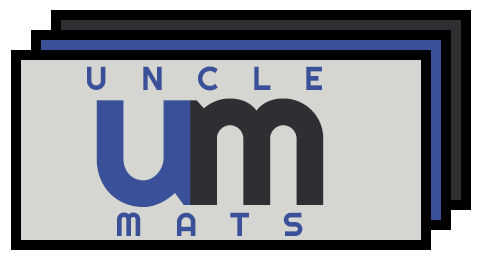Recommended for indoor use in industrial settings such as manufacturing facilities, distribution centers, machine shops, and areas where grease, oil, or chemicals may be present.
18" Center Tile: 18" x 18"
18" Side Tile: 18" x 21.75"
18" Corner Tile: 21.75" x 21.75"
36"Center Tile: 36" x 36"
36" Side Tile: 36" x 39.75"
36" Corner Tile: 39.75" x 39.75"
Please note, mat sizes are approximate as rubber shrinks and expands in conjunction with temperature and time. Tolerable manufacturing size variance is 3-5%.
SURFACE
Material: Nitrile rubber
CUSHION
Material: Closed-cell nitrile/PVC-blended foam
Density: 7.0 to 9.0 lbs/ft3
Overall Mat Thickness: 3/4 inch (0.75")
STANDARDS & TESTING
Durometer: 45
Compression Deflection:
42.3% at 20 psi
56.8% at 40 psi
Certified high-traction by the National Floor Safety Institute (NFSI)
Passes flammability standard BS-4790 Metal nut Method
ASTM C 1028-96 static coefficient of friction:
Dry 0.74
Wet 0.77
ESD Rating of electrically conductive:
Surface to surface at 50% relative humidity 9.4 x 10^5 ohms
Surface to surface at 12% relative humidity 9.3 x 10^5 ohms
Meets requirements for ASTM/ESD S20.20 and ASTM/ESD STM7.1
Hog Heaven III Comfort mats and tiles can be cleaned using the instructions below:
Scrub with a deck brush (as needed) using a detergent with a neutral pH
Rinse with a hose or pressure washer
Hang to dry
Mats and tiles should always be dry before they are placed back in service.
There are three components in the Hog Heaven III Tile System: the corner tile, the side tile, and the middle tile.
The corner tile has a border on two adjacent sides.
The side tile has a border on one side.
The middle tile has no borders.
Avoid pushing carts on Hog Heaven III Comfort Tiles. Workstations with cart traffic should use Hog Heaven III Traffic Tiles in the path of the cart.
How to Cut Hog Heaven III Tile Corners:
You will need cut-resistant gloves, a linoleum knife, and a metal straight edge.
To cut an inside corner on modular tiles, lay out the entire area of tiles making sure to overlap the side tiles forming the desired inside corner.
Lay a metal straight edge at a 45 degrees angle on top of the inside corner. Make sure to lift up the top overlap edging with the metal edge in place to see where the cut will end up to ensure you will be satisfied with the location.
Hold the metal straight edge firmly by placing downward pressure on it. Using a linoleum knife, make one firm, clean cut through both tiles. A utility knife will not cut deep enough through both tiles, and you will end up making two or three cuts (and the angles may not line up perfectly).
You should have two pieces from each tile after the cut is made. Remove those pieces.5. After making the cut, lay the inside corners of the two tiles side by side. Some users choose to glue the corner together. This can be done by adding a few drops of super glue to one side of the edging and attaching it to the other.








